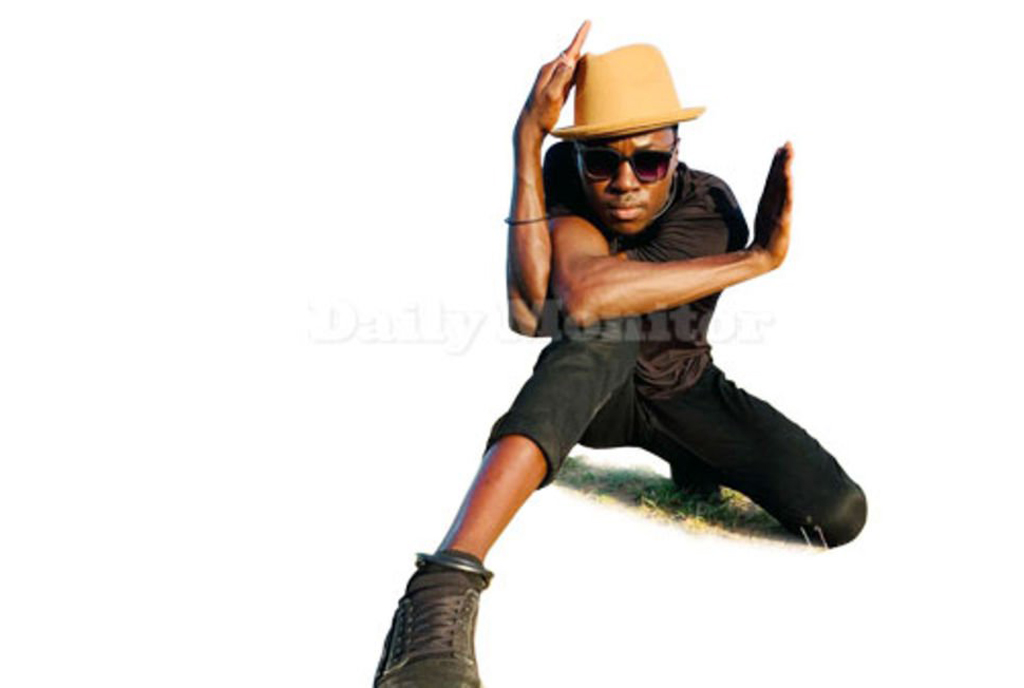
Fahad Elvis Elasu, alias Levy. PHOTO/FILE
Feel the beat.Fahad Elvis Elasu, alias Levy, is a visual artist and a popping dancer. For now, he has settled for painting to survive the pandemic. Gabriel Buule caught up with him to discuss his career and life.
What were you doing before joining dance?
I was a member of a community brass band, Mbikko Brass Band. I had majored in playing the French horn, baritone and percussion.
How did you start out as a dancer?
After the death of Michael Jackson in 2009, there was a renewed interest in his music on both radio and TV. We didn’t own a TV at home but I used to visit friends to watch, this is how I started picking interest and started imitating him.
Your first job was…
I didn’t have a specific job, however, I found myself most times working on construction sites.
What was your first salary?
Shs3,000 a day.
Who inspired you into dance?
My career as a dance choreographer was inspired by Abdul Kinyenya, of Tabu Flo Crew.
What do you like about your job?
The fact that it is my passion; it gives me social status, and makes me self-employed.
How do you manage to stand out from the pack?
Due to my humble character, I respect everyone and I am always open to learning at all levels. Secondly, I dedicate much time to practice and experimentation of new ideas. I also invest in the craft.
What has been your career highlight?
I choreographed a dance production, Ssukaali. It is a name usually given to girls at birth as a reference to the anticipated bride price at time of marriage. The dance piece addressed various issues girls face in our societies which attracted much attention and appreciation around the country.
As a child, when did you first see people dance?
In Africa, dance is part of our culture, I grew up seeing people dance from every corner. Traditional dances were mostly performed on occasions but did not catch my attention. I always gave close attention to popping dancers who created wave illusions with their arms.
When I grew up, I learnt to appreciate our own traditional dances hence fusing the two as seen in most of my choreographed productions.
What challenges do you face?
I am still facing difficulty in accessing training courses for choreography to advance. There is also a scarcity of performance spaces for dance. In eastern Uganda where I am based, we do not have any at all and those in Kampala are very expensive.
First dance film you watched?
Director Max Giwa’s Street Dance.
Fondest childhood memories are…
I danced at the bus stop with people cheering and dropping me coins that the bus almost left me behind.
Another time I was sent to buy cooking oil at the shop, found a biscuit promotion in the centre, climbed and joined the competition that had a few other dancers. I won but on coming down the stairs, I found mom waiting for me with a stick. I noticed that I had forgotten about the oil. The rest were tears but I enjoyed the biscuits I won.
Also, many times when my mom was sad, I would go in front of her and dance folding my belly which usually made her laugh.
How are you surviving through the lockdown?
Arts spaces have never been opened since the first lockdown. As a multifaceted artist, I switched energy to the visual art side of me. I draw and paint on canvas that I sell to get some money. I am also taking advantage of the lockdown to develop more dance concepts, do research and improve my skill.
What else do you do?
When I’m not on the dance floor, I spend time mentoring young people around various communities, especially those in eastern Uganda.